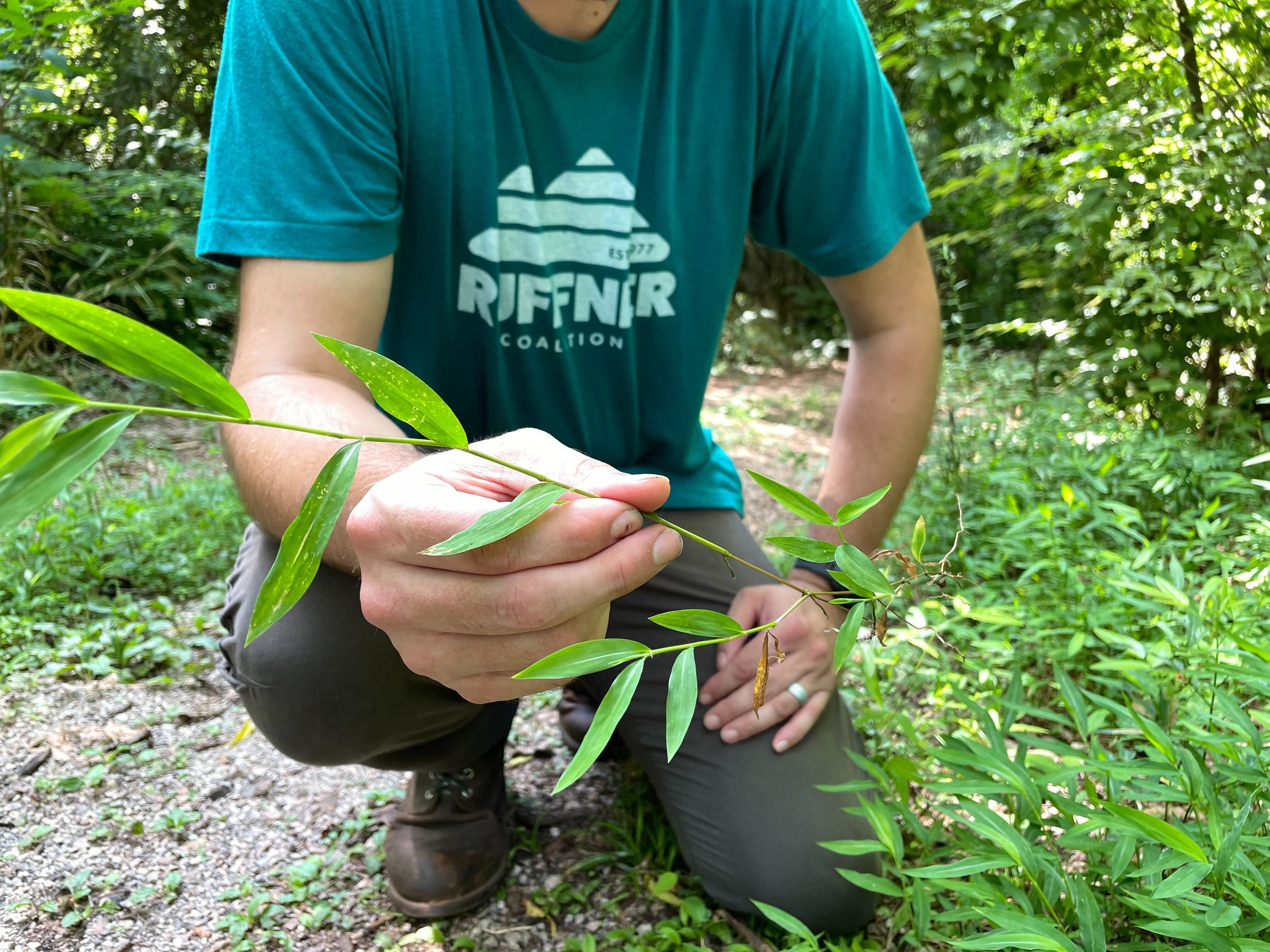Volunteers Needed!
Invasive Species #2:
Stiltgrass (Microstegium vimenium)
by Jamie Nobles
stiltgrass (Microstegium vimenium)
Invasive plants are non-native plants that cause harm to the environment. They commonly grow fast, have rapid reproduction, and high dispersal rates, and are tolerant of a wide range of environments.
Stiltgrass (Microstegium vimineum) is aggressive and can be found in many areas within the Ruffner Mountain Nature Preserve. Stiltgrass is a weak-rooted and sprawling annual grass. The growth habit of this species is typically to lie flat along the ground or propped up against other vegetation. Plants usually have multiple weak stems with aerial rootlets near the base (hence the name “stiltgrass”).
Where can I find it?
Stiltgrass is often seen in disturbed, moist areas such as trail and forest edges. We often see it on the Lizard Loop, Pipeline, Wetlands, Buckeye, and Quarry trails. It may also be found along other trails or service roads on the mountain.
What can I do to help?
This is the second self-led volunteer opportunity to help remove an invasive plant at Ruffner Mountain. Ruffner will have a collection station at the South East Lake Trailhead (main trailhead) with collection bags and a deposit bin for the invasive plant collection. Stiltgrass is an annual plant, so if it can be removed prior to seed production (September) the potential spread may be controlled. It can be easily pulled by hand without the use of special equipment. Grab a bag or 2 at the station before you begin your hike to pull stiltgrass if found along your way.
stiltgrass (Microstegium vimenium)
Identify stiltgrass. (Note: there are several native grasses similar to stiltgrass such as whitegrass, nimblewill, and deertoungue grass— Don’t pull these! More about them at the collection station. )
Pull stiltgrass. Be sure to get as many weak roots as possible and place them into the collection bag. Please be aware of potential hazards such as poison ivy, thorns/briars, venomous animals, stinging biting insects/spiders, or other seen or unseen issues before grabbing the grass.
Finally, return your filled bags to the collection station at the trailhead and record what trails you covered. We will measure out the collected materials and then destroy them to help prevent the spread of this invasive plant. (Additional collection stations may also be installed at the other trailheads.)
What is Ruffner going to do with the collected material?
We will weigh out the collected material weekly to get an idea of how much stiltgrass is being removed. We will report these numbers in a few different ways so that Ruffner’s visitors have a chance to see the progress.
**Please join us for an Invavsive Removal Volunteer Training Day on July 16th from 8 am-noon. Click here for more info and to sign our waiver.
This project along with other similar efforts will reduce the number of invasive species on the mountain and will greatly increase the potential for our native species to thrive in this ecosystem.
Source:
Evans, C.W., N.J. Loewenstein, C.T. Bargeron, C.E. Barlow and D.J. Moorhead. 2012. Field Guide To The Identification Of Japanese Stiltgrass: With comparisons to other look-a-like species. Alabama Cooperative Extension System, ANR-1457. 12 p.


